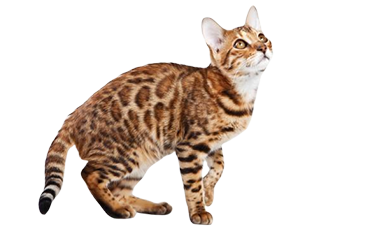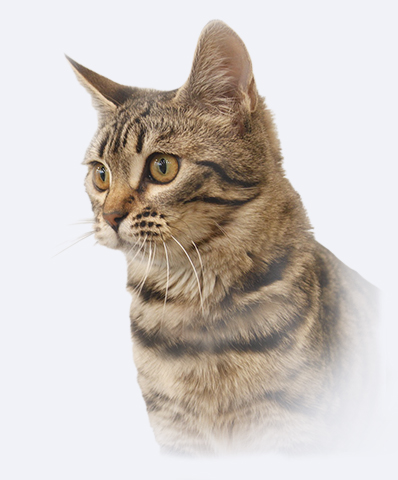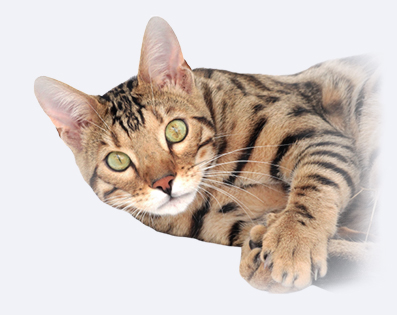
The Bengal cat breed is a perfect example of man’s need to breed a domestic cat that has the look of a wild jungle cat. In the 1960’s there was an accidental mating between and Asian Leopard Cat and a black, short haired domestic cat at Jean Sugden’s home in California. She made no further attempt to develop this hybrid cat breed until the early 1970’s when she (now Jean Mill) received more such hybrids from Dr. Willard Centerwall at the University of California.
These cats were part of a research project aimed at determining if the Leopard Cat’s immunity to feline leukemia could be transferred to domestic cats. Unfortunately the results were negative. This was the first effort to create a cat breed with the temperament of the house cat and the look of a jungle cat.
The Bengal Cat
The domestic Bengal (must be four generations or more from the Asian Leopard Cat) is a medium to a relatively large short haired exotic cat. Bengals vary in size with the male between fourteen to twenty pounds and females slightly smaller at ten to twelve pounds. Bengals are very muscular cats with long bodies, thus appearing larger. They are also sturdy and substantial in appearance.
Heads are wild looking and formidable. The face should have a feral expression with small rounded ears, intense facial markings, and pronounced whisker pads. Careful selection of breeding ensures that the Bengal remains loving and friendly with a superb temperament while still retaining a strong physical resemblance to it's wild ancestor.
Did You Know?
The Bengal has six official colors, the Brown (Black) Spotted, the Brown (Black) Marbled, the Blue-Eyed or Did You Know? Bengals with seal sepia, seal lynx and seal mink color patterns, which have a pale white or cream background, are known as “snow” Bengals


